You’ve Taken a Big Step
You're now officially on the path towards the healthiest, most beautiful smile possible. It’s an exciting time, but it also comes with a bit of a learning curve.
As you get used to your orthodontic treatment, you may find yourself having to make a few adjustments, but it will become second nature before you know it.
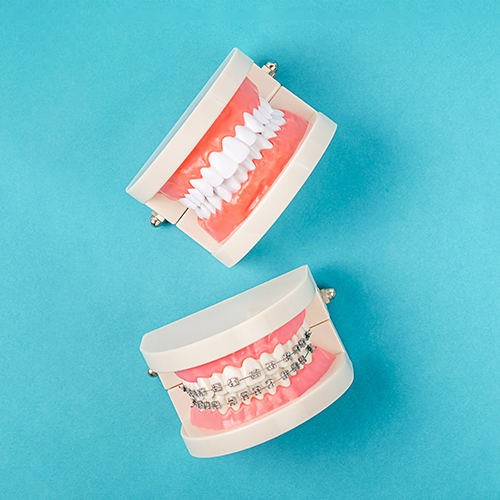
Soreness
The first few days with braces can be accompanied with tenderness and soreness. This is completely normal and usually subsides within a week.
If you find yourself experiencing any discomfort, try swishing and gargling with warm salt water for a few minutes. You only need about a tablespoon of salt in a small glass of water.
This will help soothe the irritated areas of your mouth. If this doesn't help, you can take over the counter pain relievers. Acetaminophen (Tylenol) is the best option provided you do not have an allergy to this medicine.
Your lips, cheeks, or tongue may feel irritated for the first week or two of having braces, but be reassured that this will subside as your mouth gets used to them.
If needed, you can use the dental wax we provide you with to cover up spots on your braces that may be irritating or cutting into your cheek and gums.
Don’t forget how important it is to maintain excellent oral hygiene habits while undergoing orthodontic treatment. Thorough brushing and flossing keep bacteria at bay, which keeps your whole mouth healthier in the long run.
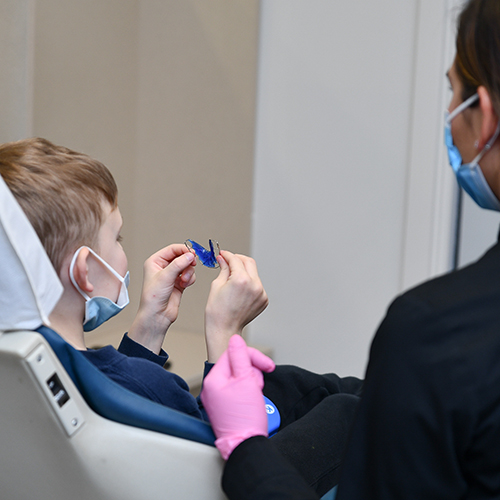
Care & Maintenance
Brushing with braces can take some getting used to. Maneuvering around brackets and wires takes a little practice.
Be sure to brush thoroughly after every meal or snack, so any food particles are removed before bacteria have a chance to grow. If you’re not able to brush right away, rinsing your mouth with water will help until you can get to a toothbrush.
Follow these tips for the best results:
- Use fluoride toothpaste with a soft, rounded-bristle toothbrush.
Braces wear toothbrushes out at a quick pace, so be sure to replace yours as soon as it begins to show signs of wear. - Brush around every part of your braces, as well as every surface of your teeth.
- Look for clean and shiny braces, with the edge of the brackets clearly visible. Fuzzy-or dull-looking metal indicates poor brushing.
- Floss every night before you go to bed. Tools like floss threaders and waterpiks are helpful if you’re having difficulty with getting a good floss underneath the wires.

Eating With Braces
In order to protect your new braces, and ensure that your treatment goes smoothly, there are a few dietary adjustments you’ll need to make. This can be difficult to get used to at first, but don’t worry - there are tons of delicious foods you can still enjoy while wearing brace, such as:
- Dairy – soft cheese, pudding, milk, yogurts, cottage cheese, eggs
- Breads – soft tortillas, pancakes, muffins with no nuts
- Grains – pasta, soft cooked rice
- Meats – poultry, tender meats, meatballs, lunch meats
- Seafood
- Vegetables – mashed potatoes, steamed veggies, beans
- Fruits – applesauce, bananas, fruit juice, smoothies, berries
- Occasional Treats – ice cream, milkshakes, Jell-O, plain soft chocolates, peanut butter cups, brownies, and soft cookies. Just remember to always keep your sugar intake as low as possible!

The foods you’ll want to avoid while wearing braces include, but aren’t limited to:
- Chewy foods – bagels, licorice, pizza crust, French breads
- Crunchy foods – popcorn, chips, ice, hard candies including lollipops, thick pretzels
- Sticky foods – caramel candies, chewing gum, gummy candies
Hard foods – nuts, hard candies - Foods that require biting into – corn on the cob, apples, carrots, ribs and chicken wings
Bad Habits
There are also a few oral habits you’ll want to steer clear of in order to keep your braces functioning perfectly.
Chewing on objects like pens and ice cubes, biting your nails, and smoking can all cause unwanted pressure on your braces, so do your best to find another way to keep yourself busy while undergoing orthodontic treatment.

Loose Wires, Bands, & Brackets
If any part of your braces come loose or break in any way, be sure to contact Dr. Kaplan to determine your next steps. While you wait for your appointment, there are a few guidelines you can follow to keep both your braces and your mouth safe.
If a band or bracket is broken, but still attached to the wire, don’t connect any elastics to it, and leave it alone until your appointment. If you find it's causing irritation to the inside of your mouth, you can cover it with orthodontic wax.
If the broken piece has actually come off, put it in a bag and save it for us to inspect at your next appointment.
Loose Teeth
It’s a normal, if disconcerting, part of your treatment to feel as though your teeth are slightly loosened, but it’s just a sign that your braces are doing exactly what we want them to.
Your teeth will continue to change positions over time, and once they settle into their new positions, they’ll stop feeling loose.
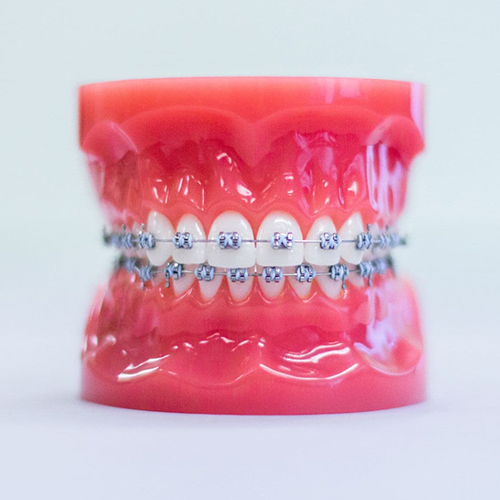
Misplaced Archwire, Bracket, or Tie
Once your teeth have adjusted to treatment, they begin to move. When this happens, the archwire that connects them may also move, poking out a bit near the back of the mouth and irritating your cheeks.
This wire can often be moved into a better position by using the eraser end of the pencil or a cotton swab. Any misplaced wires or ties can be manipulated back into place by gently using a pair of clean tweezers.
If some of the wires or brackets have shifted, and begun causing irritation to your mouth, you can use orthodontic wax to cover the parts that are poking out. This will help ease the discomfort, but make sure you get in touch with our office as soon as you can, so the actual problem can be fixed instead of you only masking the symptoms at home.
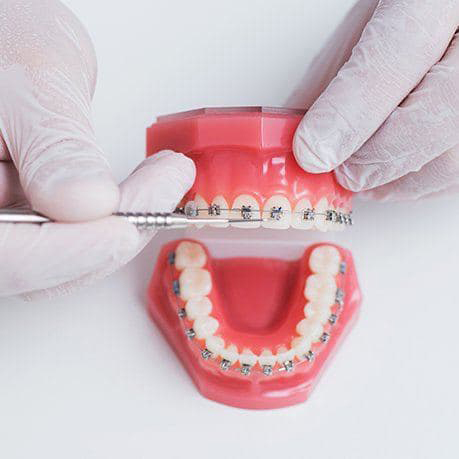
Caring for Your Orthodontic Appliance
In order to successfully complete your orthodontic treatment, and keep treatment time to a minimum, it's very important that you take care of all your orthodontic appliances, whether they are fixed or removable.
For example, Invisalign’s clear aligner system will only work if the aligners are worn the 20-22 hours per day as recommended. Being compliant is the only way to ensure your treatment is effective, and to help you achieve the smile you’ve always wanted to.
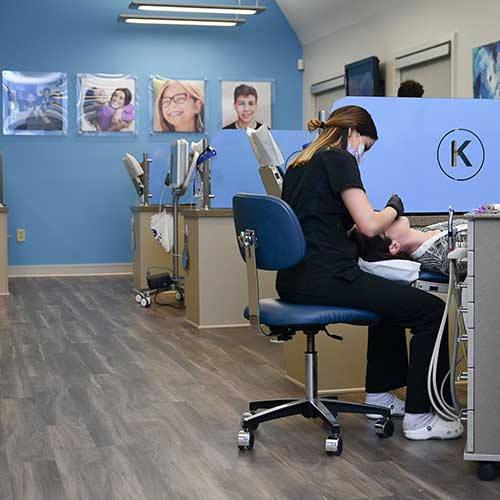
Tips for Athletes & Musicians
You can still play sports as normal during your treatment, but remember to protect your teeth with an orthodontic friendly mouth guard, or to remove your Invisalign aligner during practice or the game.
If you happen to be involved in some kind of accident during your athletic activity, check your appliances and your mouth immediately. If the appliances appear damaged or the teeth loosened, schedule an appointment.
If you play an instrument, you may find it a little challenging to become adjusted to playing with your braces. It’s normal to have some difficulty with proper lip position.
Sores can also develop, but liberal use of wax and warm salt-water rinses will help your lips and cheeks toughen up more quickly than you’d think.



